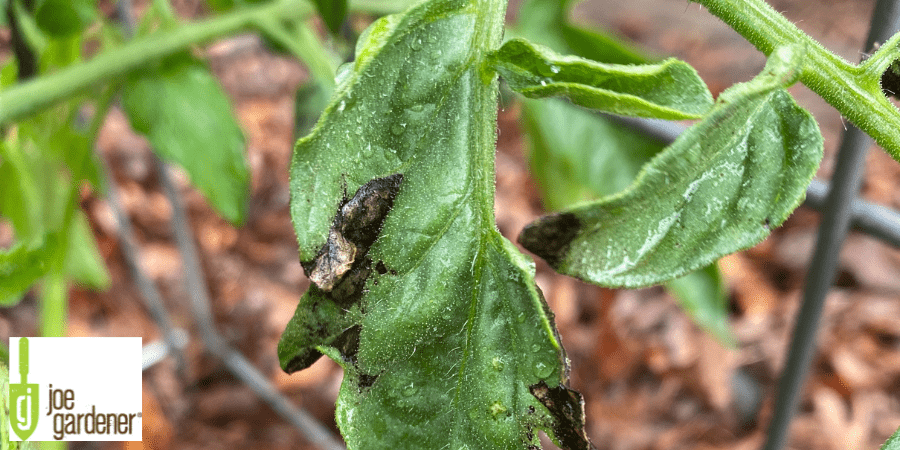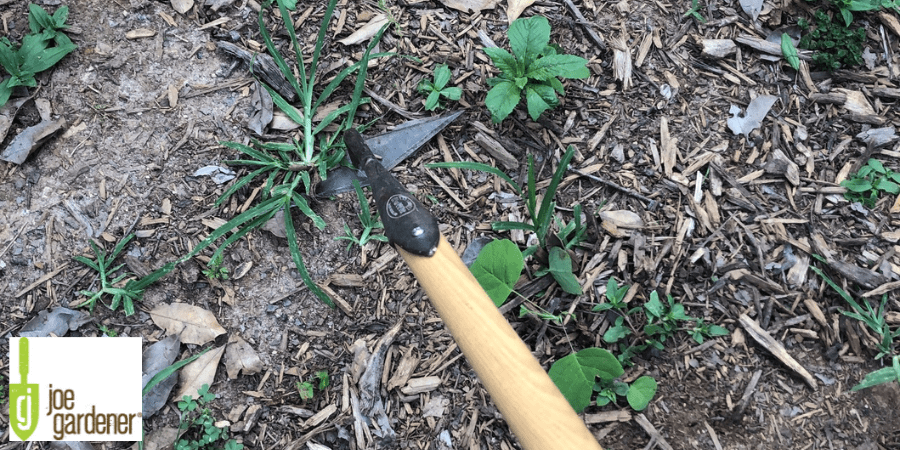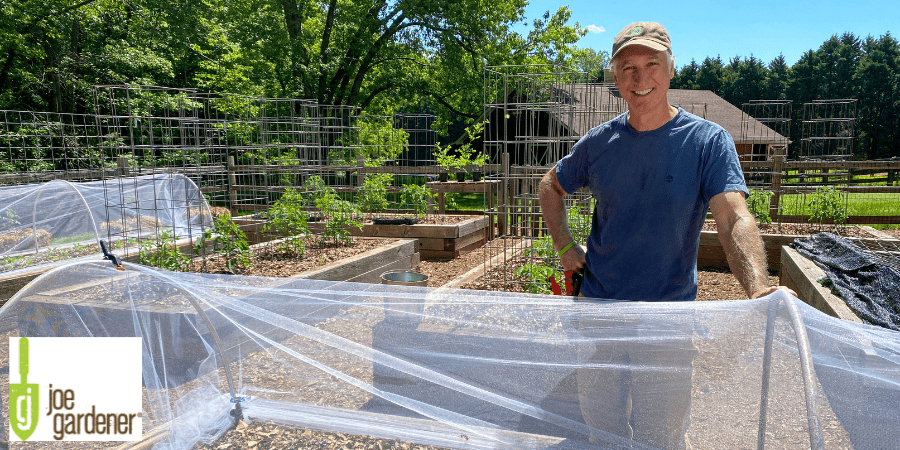Common Problems When Growing Vegetables
- Gardening Expert and Host of Growing a Greener World®June 10, 2023
Pest and disease issues and weeds are a fact of life when growing vegetables, but not every issue needs to balloon into a crisis. With preventative maintenance and diligence, gardeners can avoid or at least mitigate common vegetable growing problems.
How to Manage Vegetable Garden Diseases
Countless pathogens infect vegetable gardens, transmitted by seed, soil, air, or touch. Vegetable diseases, which are generally specific to the family of plants they affect, include bacteria, fungi, and viruses. Practicing good garden sanitation can reduce recurring disease issues, and some diseases can be prevented by making different plant choices.
If there are diseased plants or fallen leaves infected with fungal spores or bacteria in your garden — get them out of there. Good garden sanitation calls for removing diseased plant material and disposing of it far from the garden. Don’t dispose of it in your compost pile either, because pathogens can persist in compost.

When you prune your plants, bring along a spray bottle filled with rubbing alcohol. Between each cut, spray your pruners with the alcohol to kill pathogens so you don’t spread them from plant to plant with your tool.
When a disease arises, try to identify it. Again, apps can do this, or you can send a photo to your local cooperative extension for guidance. Once you have ID’ed the disease, you can pick a vegetable variety that is known to resist that disease. Plant breeders are always working on disease-resistant varieties of popular crops, so you can keep enjoying the vegetables you love while having fewer disease concerns.
There is not much you can do to stop airborne fungal spores, which ride the wind for miles, from reaching your plants, but you can do something about soilborne pathogens. Again, the answer is mulch. Mulch provides a protective barrier between the soil and plant foliage, so soil won’t splash up on foliage as your water your plants. And on the topic of watering, refrain from watering plants from overhead. Wetting the foliage encourages pathogens to take hold Instead, water under the foliage, right onto the soil, using a watering wand or a drip irrigation system.
You can also reduce the population of pathogens in your soil by practicing crop rotation. That means refraining from planting the same family of crops in the same spot year after year. For example, the nightshade family includes tomatoes, peppers, eggplants and potatoes. Because they are all “cousins,” they can be afflicted with the same diseases. So if you grew tomatoes in one garden bed, the following season, don’t plant tomatoes there again or plant peppers, eggplants or potatoes there either. Switch to a different family, such as legumes (peas and beans) and pick a different spot for your nightshade crops.
Crop rotation denies soilborne pathogens their host plants. Though the pathogens can remain in soil for a few years (rotate on a four- or five-year schedule) their population will be reduced if they don’t have host plants to latch onto.
How to Manage Weeds
I am the rare gardener who actually loves weeding. I find it meditative and satisfying, and I welcome it as a part of my gardening routine. Still, I take steps, using organic methods, to prevent weeds from running rampant or ever germinating in the first place.
To stop weed seeds from germinating, I use mulch. Most people hear “mulch” and think of those bags of dyed wood chips sold at home improvement stores. But mulch can be any material laid over the soil surface, anything from shredded leaves to plastic sheets. Mulch has many benefits — such as insulating the soil from rapid temperature changes and helping the soil retain moisture — and weed prevention is chief among them. Mulch blocks the sun from reaching weed seeds that require light to germinate, and mulch can smother the weeds that do germinate.
If you haven’t been using mulch around your vegetables, try it out, and you’ll notice a difference this season. I prefer organic mulch, such as leaves, straw, or arborist’s wood chips, because, unlike plastic, it will decompose, improving the soil below as it does.

Diamond hoe
Those weeds that outwit the mulch will soon meet my scuffle hoe. Also known as a winged-weeder or diamond hoe, this is a long-handled garden tool that makes weeding a breeze. Rather than bending down to pull out weeds by hand, I stand up straight and comfortably with my scuffle hoe and slide it along the soil surface, severing weeds’ roots as I push and pull. Since I do this often and get to weeds before they have a chance to set seed, the severed weeds can be left in place to decompose.
Getting to weeds before they can set seed is one of the most important things you can do to reduce ongoing weed issues. Some weed seeds can remain viable in soil for many years, so whenever you take care of a weed when it is young, you are doing your future self a favor.
Identification is another important step while weeding. These days, a number of smartphone apps can identify a plant based on a photo. If you are unsure whether you are looking at a weed or a seedling from a seed you intentionally planted, these apps can sort this out for you. And once you identify a weed, you can educate yourself on how it reproduces — via seed or via rhizomes — and get a better idea of how to control it.
How to Manage Vegetable Garden Pests
The most important thing to understand about garden pests is that not every insect you see in your garden is a pest. Most insect species are neutral, as far as gardeners are concerned, and many are, in fact, beneficial to gardeners — and I’m talking about more than just the bees and butterflies.
If you see a questionable insect in your garden, don’t do anything to it or about it until you have a positive ID on it. Start by taking a photo and, again, use an app, the services of your cooperative extension, or a reference book to figure out what it is.
It may be that you have found a predatory insect that has come to your garden to devour pest insects, and you’ll be glad you didn’t squish it or spray it. If anything, you’ll want to encourage more predatory insects in your vegetable garden by adding flowers and refraining from spraying.
Or it may be that you have found a pest, in which case, you need to learn a few things about it before deciding what your next steps will be: Is this a pest that will kill your plants, or will your plants likely shrug off the damage, as with flea beetle damage? If you leave it alone, are lady beetles or lacewings likely to show up to eat it and its buddies, as is the case with aphids? Is it a soft-bodied insect that can be taken care of with insecticidal soap or horticultural oil? Is it unaffected by insecticidal soap and horticultural oil, thus calling for another control method?

The fact is, there are no one-size-fits-all control methods for pests that will kill unwanted insects while preserving the good guys. Broad-spectrum pesticides are overkill, quite literally, when it comes to pest control. Destroying beneficial insects while trying to take out the pests will reduce biodiversity in your garden, leading to the need for even more intervention on your part.
When you know what type of pest you have encountered, you can implement the appropriate control method, which could include using baits/traps, adjusting your planting schedule so your crop will grow too early or too late for the pest’s active season, rotating your crops, planting trap crops, handpicking, or installing a physical barrier, such as row cover.
In dealing with weeds, diseases and pests, the most powerful problem-preventer you have is observation. Being out in the garden as often as possible to observe changes then document and intervene — when necessary — will ensure you are staying ahead of any issues that arise before they grow out of control.

